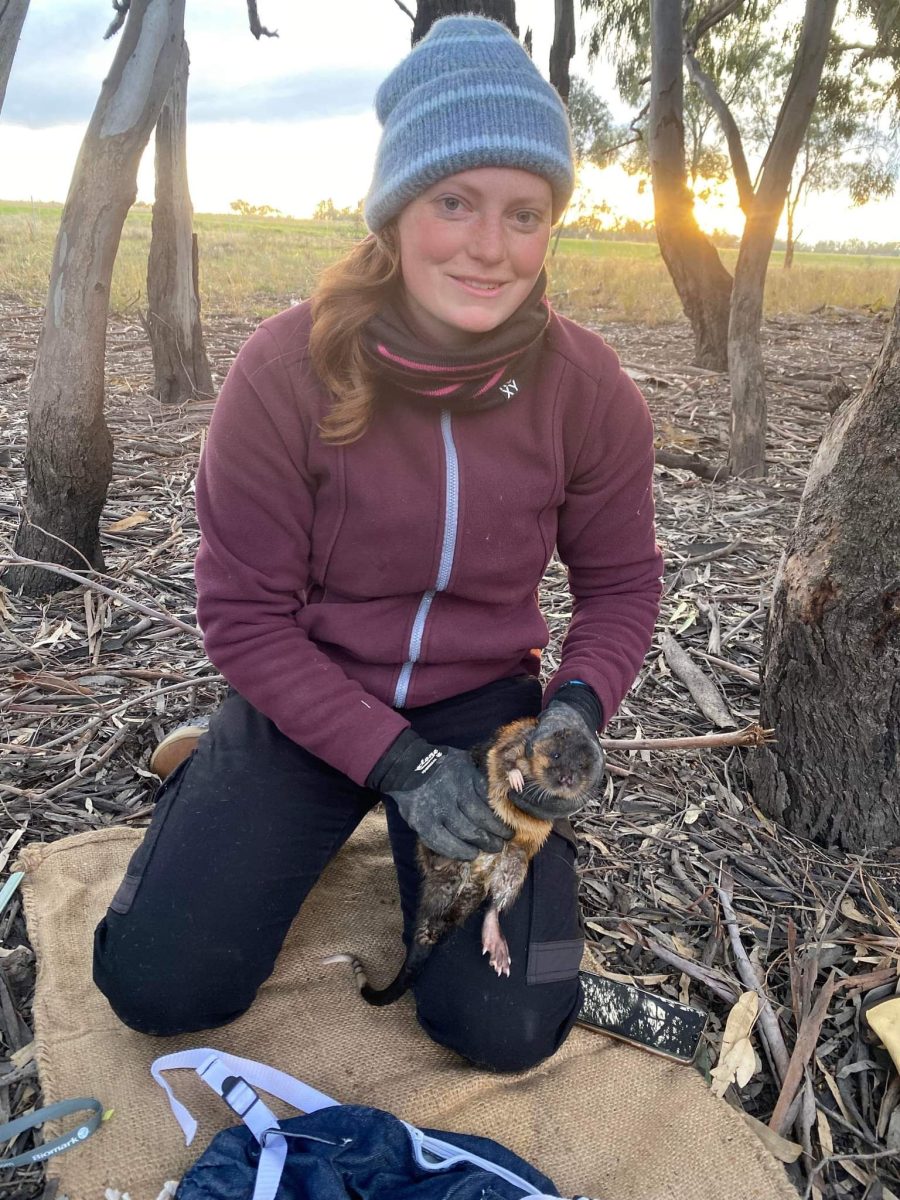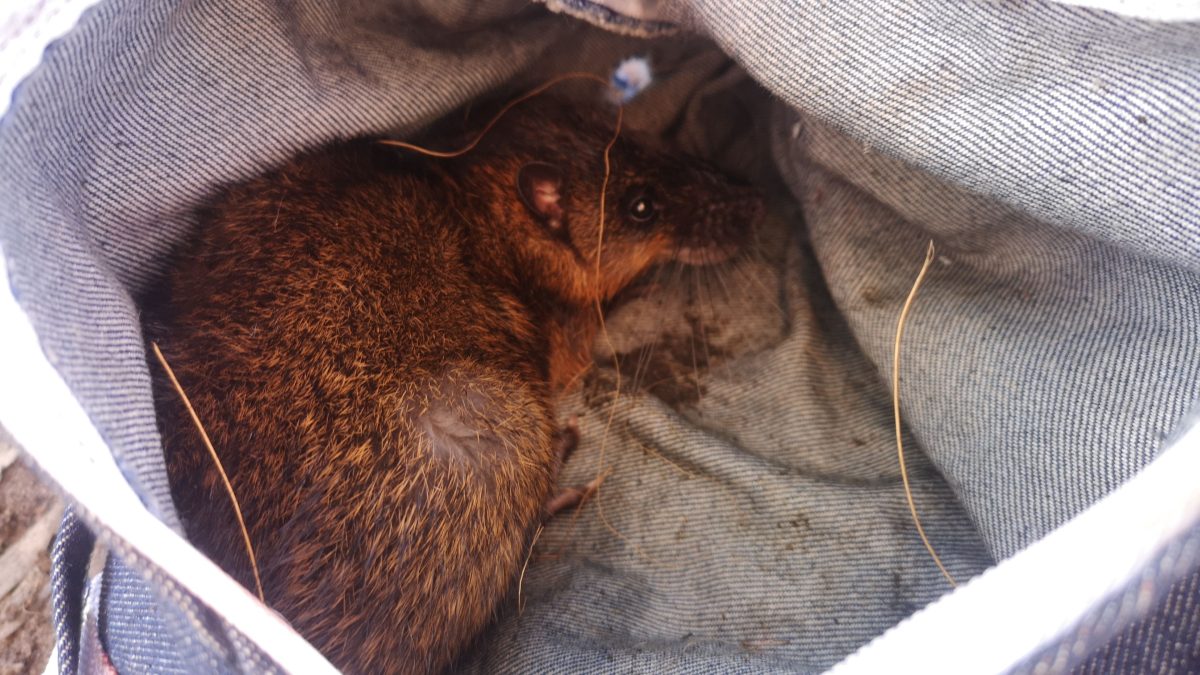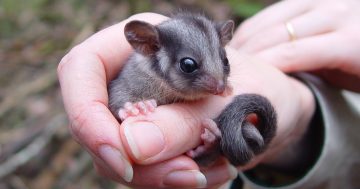
Emmalie Sanders recommends a career in animal science. Photo: Supplied.
A Charles Sturt University PhD candidate’s research investigating the elusive native rakali (Australian water rat) has been published in a leading science journal.
Emmalie Sanders, a 26-year-old who grew up in Coolamon, researched the ecology of the aquatic animal to determine the effectiveness of various detection methods.
Her work, ‘Putting rakali in the spotlight: innovative methods for detecting an elusive semi-aquatic mammal’, has since been published in CSIRO’s Wildlife Research journal.
“Rakali are understudied compared to other native species like the platypus in particular,” she said.
“But they’re prevalent across the Riverina. They’re in the Wollundry Lagoon (next to Wagga’s CBD) but many people would walk past and not know that.”
The 26-year-old says calling them the Australian water rat can be misleading.
“They are very useful to have around; they’re good for our ecosystem. They’re a top predator that have a preference for invasive species that we don’t want around, like carp. Further north, they are even eating cane toads.
“It’s better to call them rakali, which is an Indigenous name devised by those who lived at the mouth of the Murray River.”

The rakali is good for the ecosystem, says Ms Sanders. Photo: Supplied.
To determine the most effective method to monitor the species, Ms Sanders and her research team surveyed 14 sites across the Yanco Creek system in southern NSW using three main methods: visual surveys, live trapping and camera trapping.
“We compared visual surveys that were conducted at night and early morning; trapping using cage traps deployed on land and on floating platforms, and small box Elliott traps deployed on land; and camera traps set at three different angles,” Ms Sanders said.
“Two passive infrared (PIR) cameras were deployed on land near the edge of the water, one facing forward and one downward at a scent attractant.
“The third camera was set overlooking a floating platform deployed in the water.”
The team determined spotlighting at night was most effective, with six nights of 30-minute surveys yielding a 95 per cent probability of detection.
Camera traps overlooking a floating platform also achieved the same probability after 12 nights, while traps set on the platforms outperformed land-based traps. Forward-facing cameras were the least effective method, missing a third of rakali detections observed by the downward facing camera.
“We hope our findings can help inform other organisations to better include rakali in their monitoring programs and encourage the public to keep an eye out next time they are around a waterway,” Ms Sanders said.
The research was supervised by Dr Damian Michael, Associate Professor Skye Wassens and Associate Professor Dale Nimmo in the Charles Sturt Gulbali Institute for Agriculture, Water and Environment, as well as Dr James Turner with the Institute of Biomedical and Environmental Health Research at the University of the West of Scotland.
Ms Sanders obtained a Bachelor of Animal Science at Charles Sturt University, a course of study she would recommend to Year 12 students.
“It’s a good broad degree; if you want to work with animals but don’t know quite what to do, it’s perfect,” she said.
The public can also report any sightings of rakali online to iNaturalist or the Australian Platypus Conservancy.








